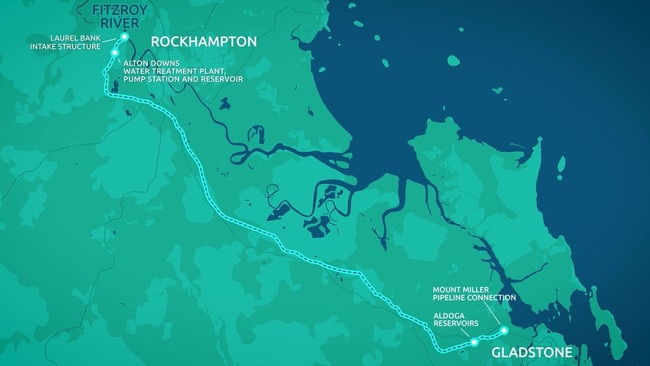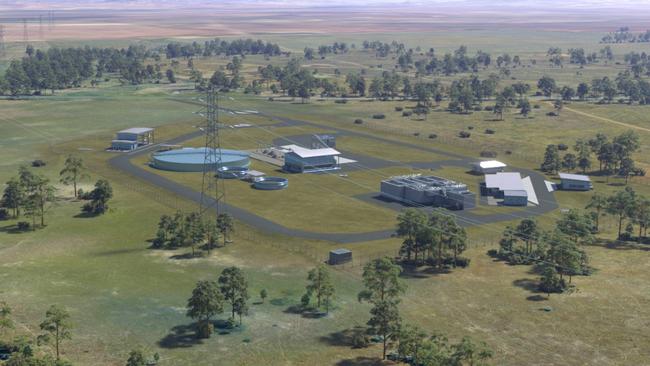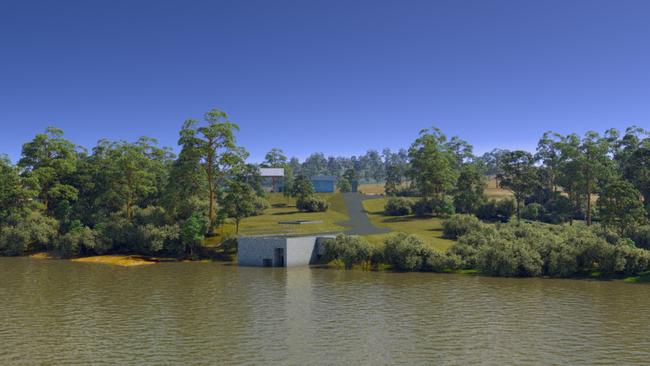Fitzroy to Gladstone $1 billion pipeline project officially approved
The Fitzroy to Gladstone pipeline has been officially approved, with works underway. The project is expected to create hundreds of jobs and support the clean energy ‘industrial revolution’.

Rockhampton
Don't miss out on the headlines from Rockhampton. Followed categories will be added to My News.
A major water infrastructure project, which will provide water security to the Gladstone region, has been given the green light to go ahead.
The $983 million Fitzroy to Gladstone pipeline was officially approve this week with works on the project already underway.
A decision on the pipeline was initially expected to be made last year.
The approval will bring 400 construction jobs to the Central Queensland region, with the pipeline’s completion expected in 2026.
The pipeline will address the single-source water supply risk from Awoonga Dam, enabling long-term water security for urban and industrial customers of Gladstone Area Water Board, and in turn supporting direct and indirect employment to Queenslanders.
The project will comprise of approximately 116km of pipeline between Rockhampton and Gladstone, a water treatment plant, reservoirs and pumping stations.

Industry in Gladstone generates $6 billion in gross regional product every year, with the industries depending on significant quantities of water.
Hydrogen proponents under development with future water requirements include the Fortescue Future Industries hydrogen electrolyser manufacturing facility, Mitsubishi Gas’s proposal for a hydrogen to green methanol plant, the Stanwell / Iwatani Central Queensland Hydrogen Project, Orica and H2U’s proposed green ammonia plant and Rio Tinto and Sumitomo’s proposed hydrogen plant.
Gladstone Area Water Board was appointed by the state government in August 2021 to deliver pre-construction activities for the pipeline, which included undertaking procurement activities, addressing land access arrangements and determining long lead time items to ensure construction readiness for the pipeline.
GAWB CEO Darren Barlow said the approval was “pivotal” in securing water for industries in Gladstone.
“Today’s announcement is pivotal in securing water for Gladstone’s industry and will support the hydrogen and renewables industry, as well as help sustain the Queensland economy and provide jobs, and I thank both the Queensland Government and Minister Butcher for their decision,” he said.
“As the delivery authority for the project, we look forward to partnering with local suppliers to deliver tangible benefits to the Gladstone region such as jobs, supply contracts and local capability raising.”
Water Minister and Gladstone MP Glenn Butcher said the infrastructure would also allow Gladstone to access their water allocation from Rookwood Weir.

“This 117-kilometre pipeline will run from the Lower Fitzroy River in Rockhampton and connect to Gladstone Area Water Board’s existing water network at Yarwun,” he said.
“It will support the emerging hydrogen and renewables sector that is set to expand in Gladstone, with several companies expressing interest in coming to the region.
“The Bradfield panel recommended investing in the use of water closer to where it falls as well as developing Regional Water Grids, and this is exactly what we are doing.”
Premier Annastacia Palaszczuk said Gladstone would be the “engine room” of the Queensland Energy and Jobs Plan.
“My Government is committed to building the infrastructure Queensland needs to support good jobs in new industries during the clean energy industrial revolution,” she said.
“Nearly $1 billion has been committed to this important project, which guarantees water security and sends a powerful signal to the hydrogen sector that Queensland is the place to be for clean energy.
“Gladstone will be the engine room when it comes to delivering our landmark Queensland Energy and Jobs Plan – that means good secure jobs now, and into the future.”
The announcement comes as the State Government also removed Rockhampton, Central Highlands, Woorabinda, Barcoo and more than half of Barcaldine from their drought declarations.
Rockhampton, the Central Highlands and Woorabinda have been drought-declared since 2019.




